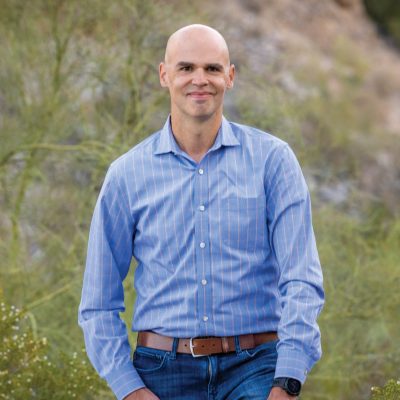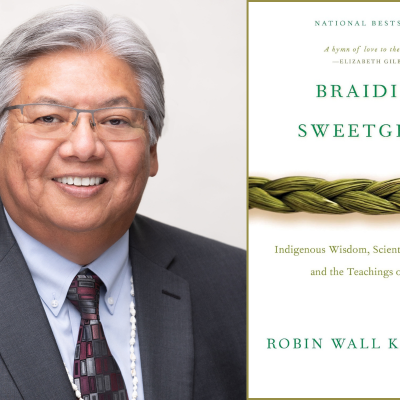10 Questions with Jayson Matthews, Director of Ending Hunger, Valley of the Sun United Way

What’s the role of United Way in dealing with hunger in the Valley? Valley of the Sun United Way supports the emergency food system, including food banks. We work with communities to co-create solutions to the root causes of hunger and poverty. We serve an important role as an advocate for communities by directly speaking with elected officials and community leaders. And we provide volunteer opportunities that allow caring people to directly interact with people in need.
What are some of the statistics around hunger in the Valley?
To start, there are about 1 million Arizonans that are food insecure, with about 625,000 in Maricopa County. Of these numbers, 60% are working 32+ hours a week. This looks like 1 in 4 children, 1 in 5 adults, and 1 in 7 seniors who are food insecure. Food insecurity isn’t starvation, it’s not knowing when you are going to eat again. Unfortunately, food insecurity has a greater impact on women with children, communities of color, those with disabilities, and seniors. And, chronic food insecurity and chronic health problems are linked, especially the problems of diabetes, hypertension, and osteoporosis.
What are some of the biggest misperceptions about hunger?
Many people believe that if someone is hungry in the United States, it is because of the choices they have made – not because of any systems, external circumstances, or bad luck. Most people who receive emergency food don’t want to be in that circumstance. It is a stressful, humiliating, and hard way to live that is compounded by our society’s tendency to sometimes vilify the poor.
How does hunger tie in with other problems in the Valley?
Food insecurity is a “canary in the coal mine” for poverty. People are food-insecure because of insufficient income that fails to cover all of their basic needs. What we see is that if a household only has so much monthly income, they will begin to prioritize critical living expenses beginning with shelter, water, electricity, natural gas, telephone, transportation to get to job/school, medications, THEN food. We see many parents who “diet” by cutting back their daily calorie intake so their children can eat more. We see many seniors who cut back on more expensive fresh and healthy food options so they can afford medications AND their monthly expenses.
What kind of situations and challenges are facing those who are dealing with hunger?
The emotional distress that comes with the stigma of not being able to feed yourself and your children. We see this most clearly in low-income, school-aged children and low participation rates in free and reduced rate school breakfast programs. No one likes to be seen as the kid who can’t afford their breakfast, so the kids skip the meal and play with friends instead. The stigma that comes with poverty has a ripple effect on stress, anxiety, and confidence for children and adults alike. Unfortunately, this causes many in need to hide in the shadows until a bigger crisis emerges.
What makes the issue of hunger such a challenge in our community?
Hunger is a big challenge because of numerous misperceptions about poverty, lack of understanding of the food system, and our country’s overall bad relationship with food. All of this adds up to a complex problem that requires adaptive leadership, collective impact, and changes in multiple systems. This isn’t easy! It’s more than a canned food drive.
What would you tell people to help them understand the challenge better?
1.) Be more aware of your personal advantages and disadvantages when it comes to food options, cost, and time.
2.) Hear the stories of people who are down on their luck and work with them to improve their lives. This step requires all of us to do a little more work when we help others. While critical, financial donations and volunteerism aren’t enough to end hunger. We need to hear the challenges and remarkable stories of resiliency firsthand in order to be strong advocates for big change.
How are nonprofits working together to solve it?
Maricopa County has an amazing group of nonprofits that address hunger and food insecurity. Our Emergency Food System, which includes food banks, congregate meals, and home delivered meals is one of the best around – and they always need your donations and volunteer time. In addition, the Valley of the Sun United Way is working directly with the communities of Maryvale, Central City, and Guadalupe to co-create long-term solutions that address the root causes of hunger.
People mostly associate hunger with the holidays, but isn’t hunger a year-round issue?
Yes! While awareness of hunger is highest during Thanksgiving and Christmas, the Emergency Food System and Valley of the Sun United Way are helping families, children, and seniors every day of the year. What’s the best way for people to help fight hunger, both from a donation and volunteer standpoint? Partner with Valley of the Sun United Way. Your donation at www.vsuw.org supports our work of building community gardens, teaching people how to grow food, training trainers to deliver food and financial literacy, building community resiliency AND supporting the Emergency Food System. Valley of the Sun United Way can be a great resource for volunteer opportunities. This is how we can end hunger and break the cycle of poverty.







